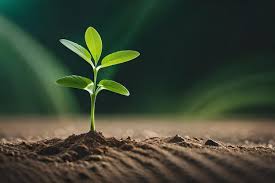In the heart of a bustling city, where the rhythm of life often drowned out the whispers of nature, imagine a quiet park that held a top secret. Beneath its picturesque facade, a dark reality unfolded each night.
In the depths of the park, a forgotten pond was home to a community of enchanting creatures. Sparkling frogs with iridescent hues and luminous fireflies painted the night with their magical glow. However, an ominous presence had infiltrated their sanctuary – Styrofoam is the insidious invader…
The mystical pond, once a haven for vibrant life, became a graveyard for unsuspecting creatures. Styrofoam, like a silent predator, lurked beneath the water’s surface, suffocating the frogs in its cold embrace. The enchanting glow of fireflies now flickered against the lifeless backdrop of floating Styrofoam. Meanwhile, as ugly as the frog might look, many don’t understand its importance as guardians of environmental health, contributing to ecological balance, as amphibians, frogs connect aquatic and terrestrial ecosystems. Tadpoles contribute to nutrient cycling in freshwater habitats by consuming algae and detritus, while adult frogs transport nutrients to terrestrial ecosystems when they move between aquatic and terrestrial environments.
… and the above could have served as an interlude to the opening story of our movie on how printing and packaging can influence the entire life of a society.
I particularly like how Jonas Gahr Store put it when he said “Nature is good at connectivity. The impact of diverse human activities is observed and absorbed throughout nature. Everything is linked. Nature has no problem with coherence. Ecosystems react with their own logic” and I will say Printing and Packaging adds colour, order and structure to the logic of our entirety.
It is now easy to see that the prohibition of styrofoam in Lagos state is driven by valid environmental concerns, but instantly poses a range of economic implications, particularly for our peculiar economies which are already facing their own unique hyper-challenges. This write-up explores the multifaceted effects of such a ban, especially its impact on businesses, the potential for economic revival through sustainable alternatives, and hopefully strategies to transform this ban into a catalyst for positive change.
Economic Implications:
In the short term, businesses heavily reliant on styrofoam will surely experience increased operational costs as they transition to alternative materials especially as they had no time to plan the transition properly because of the instantaneous nature of the ban. Small enterprises, in particular, may find it challenging to adapt swiftly. This shift can exacerbate challenges in an already ailing economy, potentially leading to job losses and financial strain on businesses already grappling with economic hardships. Those who have imported or produced and currently have a large stock of this styrofoams are already in deep trouble.
Sustainable Alternatives:
Amidst these challenges however lie opportunities. A myriad of sustainable alternatives to styrofoam has emerged over time, offering environmentally friendly options for businesses and consumers alike. Biodegradable packaging, compostable materials, and reusable containers are gaining traction. Policymakers and businesses can collaborate to incentivize the adoption of these alternatives through grants, tax breaks, and research and development funding. This not only mitigates environmental impact but also fosters the growth of a new sector within the economy. I particularly will like to see the use of leaf used in packaging moimoi or Ofada rice come back powerful with innovations of printing on the leaf.
Turning the Ban into a Boom:
To capitalize on the ban, a strategic approach is crucial. Public awareness campaigns play a pivotal role in educating consumers about the benefits of sustainable alternatives. Governments can actively promote eco-conscious choices, encouraging a cultural shift toward responsible consumption. Initiatives like “green business” certifications can boost consumer confidence in environmentally responsible enterprises, thereby driving demand for eco-friendly products.
Investment in research and development is paramount for creating innovative, cost-effective sustainable alternatives. Governments can indeed channel funds into initiatives that spur the development of cutting-edge materials, manufacturing processes, and recycling technologies. This not only addresses environmental concerns but also positions the nation as a leader in sustainable practices, which could likely attract global investments and foster economic growth.
In my opinion. The transition away from styrofoam opens the door to new job opportunities and industry expansion. Governments can collaborate with businesses to provide training programs for workers affected by the ban, facilitating their integration into the emerging and unavoidable green economy. Simultaneously, supporting startups and businesses embracing sustainable practices can stimulate economic growth by creating employment and fostering a more resilient economy.
In Conclusion, while the ban on Styrofoam poses initial economic challenges, a strategic and proactive approach can turn these hurdles into opportunities for growth. By embracing sustainable alternatives, investing in research and development, and fostering consumer awareness, economies can transform the ban into a catalyst for positive change, laying the foundation for a more resilient and environmentally conscious future.





3 comments
Indeed, the ban on use of styrofoam by the lagos government couldn’t have come at a better time than now. This is because, apart from the disruption in the Eco system, the use has a direct negative impact on human health and no thanks to the chemicals used in the production. And by the way, I stand to be corrected but I think the use of styrofoam in food packaging industries in the developed countries is not allowed.
The use of moin moin leaf as an alternative is good but not sustainable given its various limitations, hence, a worthy alternative should amongst other qualities: be readily available, effective in use, relatively cheap, safe health wise and Eco friendly.
The opportunity inherent in this problem is awesome but requires one to research and innovate.
Thanks Akin for this beautiful essay. I have always enjoyed reading your perspective about topical issues. Keep up the good job.
Appreciate you a great deal sir